| |
Exceipnts
|
| |
| |
|
| Alginic Acid |
|
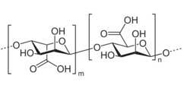 |
Alginic acid, also called algin or alginate, is an anionic polysaccharide distributed widely in the cell walls of brown algae, where it, through binding water, forms a viscous gum. In extracted form it absorbs water quickly; it is capable of absorbing 200-300 times its own weight in water.Its colour ranges from white to yellowish-brown. It is sold in filamentous, granular or powdered forms. |
| |
 |
| |
|
|
|
| |
| |
|
| Allantoin |
|
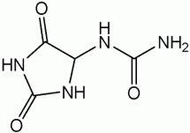 |
Allantoin is present in botanical extracts of the comfrey plant and urine from cows and most mammals. Chemically synthesized bulk allantoin is nature-identical, safe, non-toxic, compatible with cosmetic raw materials and meets CTFA and JSCI requirements. Over 10,000 patents reference allantoin. |
| |
 |
| |
|
|
|
| |
| |
|
| Ammonium Chloride |
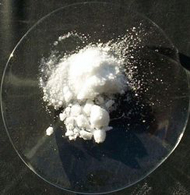 |
Ammonium chloride NH4Cl (also Sal ammoniac, salmiac, nushadir salt, sal armagnac, sal armoniac, salt armoniack) is, in its pure form, a clear white water-soluble crystalline salt of ammonia. The aqueous ammonium chloride solution is mildly acidic.
Sal ammoniac is a name of natural, mineralogical form of ammonium chloride. The mineral is especially common on burning coal dumps (formed by condensation of coal-derived gases), but also on some volcanoes. |
| |
 |
| |
|
|
|
| |
| |
|
| Aspartame |
|
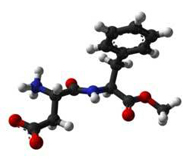 |
The safety of aspartame has been the subject of several political and medical controversies, Congressional hearings and internet hoaxes since its initial approval for use in food products by the U.S. Food and Drug Administration (FDA) in 1974.
A 2007 medical review on the subject concluded that "the weight of existing scientific evidence indicates that aspartame is safe at current levels of consumption as a non-nutritive sweetener".[3] However, because its breakdown products include phenylalanine, aspartame must be avoided by people with the genetic condition phenylketonuria (PKU). |
| |
 |
| |
|
|
|
| |
| |
|
| Bentonite |
|
 |
Bentonite is an absorbent aluminium phyllosilicate, in general, impure clay consisting mostly of montmorillonite. There are different types of bentonites, and their names depend on the dominant elements, such as potassium (K), sodium (Na), calcium (Ca), and aluminum (Al). As noted in several places in the geologic literature, there are some nomenclatorial problems with the classification of bentonite clays.
Bentonite usually forms from weathering of volcanic ash, most often in the presence of water. However, the term bentonite, as well as a similar clay called tonstein, has been used for clay beds of uncertain origin. For industrial purposes, two main classes of bentonite exist: sodium and calcium bentonite.
In stratigraphy and tephrochronology, completely devitrified (weathered volcanic glass) ash-fall beds are commonly referred to as K-bentonites when the dominant clay species is illite. Other common clay species, and sometimes dominant, are montmorillonite and kaolinite. Kaolinite-dominated clays are commonly referred to as tonsteins and are typically associated with coal. |
| |
 |
| |
|
|
|
| |
| |
|
| Benzalkonium chloride BKC-50 |
 |
Benzalkonium chloride, also known as alkyldimethylbenzylammonium chloride, is a mixture of alkylbenzyldimethylammonium chlorides of various even-numbered alkyl chain lengths. This product is a nitrogenous cationic surface-acting agent belonging to the quaternary ammonium group. It has three main categories of use; as a biocide, a cationic surfactant and phase transfer agent in the chemical industry. |
| |
 |
| |
|
|
|
| |
| |
|
| Benzocaine |
|
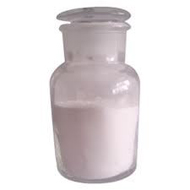 |
Benzocaine is a local anesthetic commonly used as a topical pain reliever. It is the active ingredient in many over-the-counter anesthetic ointments (e.g. products for oral ulcers of Anbesol by Wyeth, Kank+a by Blistex, and Orabase B and Orajel by Del Pharmaceuticals). It is also combined with antipyrine to form A/B Otic Drops, (Brand name Auralgan) to relieve earpain and remove earwax. |
| |
 |
| |
|
|
|
| |
| |
|
| Benzoic Acid |
|
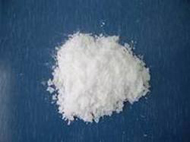 |
| NAME |
BENZOIC ACID |
| FORMULA |
C6H5COOH |
| Molecular Wt. |
122.12 |
| CAS No. |
65-85-0 |
Benzoic acid, (C6H5COOH), is a colorless crystalline solid and the simplest aromatic carboxylic acid. The name derived from gum benzoin, which was for a long time the only source for benzoic acid. Its salts are used as a food preservative and benzoic acid is an important precursor for the synthesis of many other organic substances. The salts and esters of benzoic acid are known as benzoates
Benzoic acid and its salts are used as a food preservatives. Benzoic acid inhibits the growth of mold, yeast and some bacteria. It is either added directly or created from reactions with its sodium, potassium, or calcium salt. The efficacy of benzoic acid and benzoate is dependent on the pH of the food. Acidic food and beverage like fruit juice (citric acid), sparkling drinks (carbon dioxide), soft drinks (phosphoric acid), pickles (vinegar) or other acidified food are preserved with benzoic acid and benzoates.
Benzoic acid is combined with chloride and phosphorus to make chemicals, most of which are poisonous. These primarily include insect repellants.
Benzoic acid also goes into artificial flavors as well as perfume. Tobacco is sometimes even flavored with benzoic acid.
An antifungal and antibacterial agent that is used mainly as a preservative in medicines and foods. In combination with salicylic acid, it is used in the form of an ointment for treating fungal infections of the skin, such as ringworm; it is also included in some soothing preparations for haemorrhoids. Benzoic acid also has keratolytic properties and is used in combination with malic acid and salicylic acid for removing dead skin from ulcers, burns, and wounds
|
| |
 |
| |
|
|
|
| |
| |
|
| Benzyl Alcohol |
|
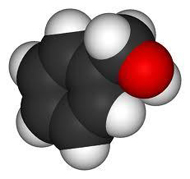 |
| NAME |
BENZYL ALCOHOL |
| FORMULA |
C7H80 |
| Molecular Wt. |
108.14 |
| CAS No. |
100-15-6 |
Benzyl alcohol is an organic compound with the formula C6H5CH2OH. Benzyl alcohol is a colorless liquid with a mild pleasant aromatic odor. It is a useful solvent due to its polarity, low toxicity, and low vapor pressure. Benzyl alcohol is partially soluble in water (4 g/100 mL) and completely miscible in alcohols and diethyl ether
Applications
Benzyl alcohol is used as a general solvent for inks, paints, lacquers, and epoxy resin coatings. It is also a precursor to a variety of esters, used in the soap, perfume, and flavor industries. It is often added to intravenous medication solutions as a preservative due to its bacteriostatic and antipruritic properties. It is also used as a photographic developer. Benzyl Alcohol is also used as a preservative in Injections.
| Container Loadability |
17.6 MTS / 20 ftr |
| Packing |
250/220 kgs Nett HMHDPE Carboys / Barrels |
|
| |
 |
| |
|
|
|
| |
| |
|
| Benzyl Benzoate |
|
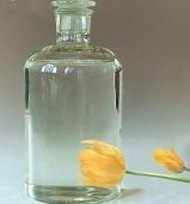 |
| NAME |
BENZYL BENZOATE |
| FORMULA |
C14H12O2 |
| Molecular Wt. |
212.24 |
| CAS No. |
120-51-4 |
Benzyl benzoate is the ester of benzyl alcohol and benzoic acid, with the formula C6H5CH2O2CC6H5. This easily prepared compound has a variety of uses.
Uses
Benzyl benzoate, as a topical solution, may be used as an antiparasitic insecticide to kill the mites responsible for the skin condition scabies, for example as a combination drug of benzyl benzoate/disulfiram.
It has other uses:
- a fixative in fragrances to improve the stability and other characteristics of the main ingredients
- a food additive in artificial flavors
- a plasticizer in cellulose and other polymers
- a solvent for various chemical reactions
- a treatment for sweet itch in horses
- a treatment for scaly leg mites in chickens
| Container Loadability |
18 MTS / 20 ftr |
| Packing |
50/225 Kgs Nett HM HDPE carboys/Barrels |
|
| |
 |
| |
|
|
|
| |
| |
|
| Bronopol |
|
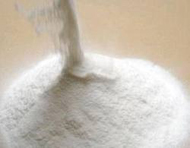 |
Bronopol is a highly active antimicrobial chemical compound whose chemical formula is 2-bromo-2-nitropropane-1,3-diol. Bronopol was invented by The Boots Company PLC, Nottingham, England in the early 1960s and first applications were as a preservative for pharmaceuticals.
Bronopol's low mammalian toxicity (at in-use levels) and exceptional activity against bacteria (especially the troublesome Gram-negative species) ensured that it became popular as a preservative in many consumer products such as shampoos and cosmetics. |
| |
 |
| |
|
|
|
| |
| |
|
| Borax |
|
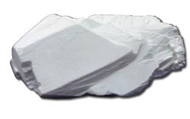
|
The borax offered by us is the refined form of natural sodium borate. It is composed of boric oxide (b2o3), sodium oxide, and water and finds application in soap and detergents industries, cosmetics industries, pharmaceuticals industries and leather industries.
|
| |
 |
| |
|
|
|
| |
| |
|
| Butyl Hydroxy Benzoate (Butyl Paraben) |
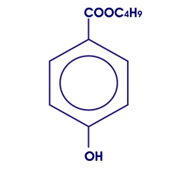 |
Parabens are a class of chemicals widely used as preservatives in the cosmetic and pharmaceutical industries. Parabens are effective preservatives in many types of formulas. These compounds, and their salts, are used primarily for their bactericidal and fungicidal properties. They can be found in shampoos, commercial moisturizers, shaving gels, personal lubricants, topical/parenteral pharmaceuticals, spray tanning solution, makeup[1], and toothpaste. They are also used as food additives.
Their efficacy as preservatives, in combination with their low cost, the long history of their use, and the inefficacy of natural alternatives like grapefruit seed extract (GSE), probably explains why parabens are so commonplace. They are becoming increasingly controversial, however, because they have been found in extremely low concentrations in breast cancer tumors (an average of 20 nanograms/g of tissue).
Parabens have also displayed the ability to weakly mimic estrogen (a hormone known to play a role in the development of breast cancer). No causal link between parabens and cancer has been established, however. |
| |
 |
| |
|
|
|
| |
| |
|
| Butylated Hydroxy Anisole (BHA) |

|
| NAME |
BUTYLATED HYDROXY ANISOLE |
| FORMULA |
C11H16O2 |
| Molecular Wt. |
180.25 |
| CAS No. |
25013-16-5 |
Butylated hydroxyanisole (BHA) is an antioxidant consisting of a mixture of two isomeric organic compounds, 2-tert-butyl-4-hydroxyanisole and 3-tert-butyl-4-hydroxyanisole. It is prepared from4-methoxyphenol and isobutylene. It is a waxy solid used as a food additive .
Applications
- The most effective antioxidant, imparting excellent stability for an array of food products, fats, shortenings, vitamins, pet foods, cosmetics pharmaceutical products and packaging materials
- It reduces the oxidative deterioration of edible oils and fats, loss of flavour, colour and nutritive value of foods
- It is stable to heat and mildly alkaline conditions
- It is commonly used in biscuits, cakes, fats and oils, cereals, pastry and pastry products, nuts, potato snack foods, sweets, and chewing gum. Generally used to keep fats and oil from becoming rancid, as well as preserve food odour, colour, and flavour.
| Packing |
5/10/25 Kgs Nett DRUM |
|
| |
 |
| |
|
|
|
| |
| |
|
| Butylated Hydroxy Toluene (BHT) |
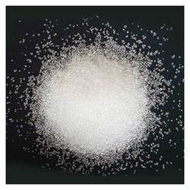 |
| NAME |
BUTYLATED HYDROXY TOLUENE |
| FORMULA |
C15H244O |
| Molecular Wt. |
220.36 |
| CAS No. |
128-37-0 |
Butylated hydroxytoluene (BHT), also known as butylhydroxytoluene, is a lipophilic (fat-soluble) organic compound that is primarily used as an antioxidant food additive
Applications
The antioxidant activity of BHT can be transferred to baked products if it is used as an antioxidant in the shortenings used in their manufacture. BHT acts as a synergist with BHA and mixtures of these antioxidants are commonly used for stabilising fats and oils as given weight of the mixture imparts a greater stability to the fat or oil than would the same weight of BHT or BHA if used individually.
BHT is a particularly good antioxidant for stabilizing meat, fish and bone meals. BHT may be used, either alone or in combination with BHA, to stabilise edible tallows and fats, fish and fish liver oils, vitamins and essential oils.
BHT is used to treat genital herpes and acquired immunodeficiency syndrome (AIDS).
It may damage the protective outer layer of viral cells. This may keep the viruses from multiplying and/or doing more damage.
Cold sores caused by a type of virus called herpes. Developing evidence suggests that putting BHT on cold sores may help them heal faster.
|
| |
 |
| |
|
|
|
| |
| |
|
| Calamine |
|
 |
Calamine is a mixture of zinc oxide (ZnO) with about 0.5% iron(III) oxide (Fe2O3). It is the main ingredient in calamine lotion and is used as an antipruritic (anti-itching agent) to treat mild pruritic conditions such as sunburn, eczema, rashes, poison ivy, chickenpox, and insect bites and stings.[1][2][3][4][5][6]
It is also used as a mild antiseptic to prevent infections that can be caused by scratching the affected area, and an astringent to dry weeping or oozing blisters and acne abscesses. |
| |
 |
| |
|
|
|
| |
| |
|
| Calcium Carbonate PPT / Oystaer |
 |
The range of natural Calcium Carbonate & PPT Calcium Carbonate offered by us feature high purity standards and find extensive application in the industries like Pharmaceutical, Cosmetic and others. Our association with leading manufacturers also allows us to deliver these in customized specifications as required to meet the particular application demands by individual industries. |
| |
 |
| |
|
|
|
| |
| |
|
| Calcium Chloride (Dihydrate) |
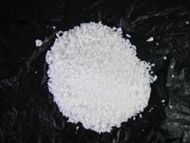 |
Our company is engaged in offering of Calcium Chloride Dihydrate. This is a white hygroscopic powder and soluble in water and ethanol. Chemical formula and molecular weight of this substance are CaCl2(2H20) and147.01respectively. Our all organic and inorganic chemicals are offered at cost effective prices. |
| |
 |
| |
|
|
|
| |
| |
|
| Calcium Citrate |
|

|
Calcium citrate is the calcium salt of citric acid. It is commonly used as a food additive (E333), usually as a preservative, but sometimes for flavor. In this sense, it is similar to sodium citrate. Calcium citrate is also used as a water softener because the citrate ions can chelate unwanted metal ions. Calcium citrate is also found in some dietary calcium supplements (e.g. Citracal). Calcium makes up 21% of calcium citrate by weight. |
| |
 |
| |
|
|
|
| |
| |
|
| Calcium Citrate Malate |
 |
Calcium citrate malate is a water-soluble calcium supplement. It is the calcium salt of citric acid and malic acid with variable composition. It is purported to be highly bioavailable. Calcium citrate malate's bioavailability stems from its water-solubility and its method of dissolution. When dissolved, it releases calcium ions and a calcium-citrate complex.
Calcium ions are absorbed directly into intestinal cells, and the citrate complex enters the body through paracellular absorption. |
| |
 |
| |
|
|
|
| |
| |
|
| Calcium Hydroxide |
|
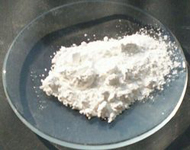 |
Calcium hydroxide, traditionally called slaked lime, is an inorganic compound with the chemical formula Ca(OH)2. It is a colourless crystal or white powder and is obtained when calcium oxide (called lime or quicklime) is mixed, or "slaked" with water. It has many names including hydrated lime, builders lime, slack lime, cal, or pickling lime. It is of low toxicity and finds many applications. |
| |
 |
| |
|
|
|
| |
| |
|
| Calcium Lactate |
|
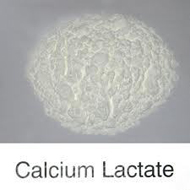 |
Calcium lactate is a white crystalline salt made by the action of lactic acid on calcium carbonate. It is used in foods (as a baking powder) and given medicinally. Its E number is E327. Calcium lactate is often found in aged cheeses. Small crystals of it precipitate out when lactic acid is converted into a less soluble form by the bacteria active during the ripening process. |
| |
 |
| |
|
|
|
| |
| |
|
| Camphor |
|
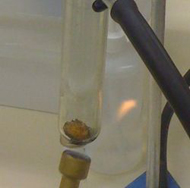 |
Camphor is a waxy, white or transparent solid with a strong, aromatic odor.[3] It is a terpenoid with the chemical formula C10H16O. It is found in wood of the camphor laurel (Cinnamomum camphora), a large evergreen tree found in Asia (particularly in Borneo and Taiwan) and also of Dryobalanops aromatica, a giant of the Bornean forests. It also occurs in some other related trees in the laurel family, notably Ocotea usambarensis.
Dried rosemary leaves, (Rosmarinus officinalis), in the mint family, contain up to 20% camphor. It can also be synthetically produced from oil of turpentine. It is used for its scent, as an ingredient in cooking (mainly in India), as an embalming fluid, for medicinal purposes, and in religious ceremonies. A major source of camphor in Asia is camphor basil. |
| |
 |
| |
|
|
|
| |
|
| |
|
| |
| |
|
| Cetomacrogol 1000 |
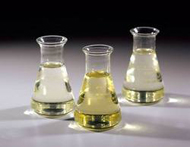 |
Cetomacrogol 1000 is a non-ionic surfactant of the polyethylene glycol family. It is used as a solubilizer and emulsifying agent in foods, cosmetics, and pharmaceuticals, often as an ointment base, and also as a research tool. It is used as O/W emulsifier for creams/lotions; Wetting agent in sticks; Conforms to BP specifications. Use 0.5-5%. |
| |
 |
| |
|
|
|
| |
| |
|
| Cetrimide |
|
 |
Cetrimide ((C16H33)N(CH3)3Br, is one of the components of the topical antiseptic cetrimide. The cetrimonium (or hexadecyltrimethylammonium) cation is an effective antiseptic agent against bacteria and fungi. |
| |
 |
| |
|
|
|
| |
| |
|
| CMC Sodium DVP/RVP/MVP |
 |
Our clients can avail from us distinguished CMC Sodium DVP/RVP/MVP, which is procured from authentic vendors of the market. Sodium CMC is technical grade sodium carboxy methyl cellulose that is easily dispersible in the drilling fluid. This chemical is a long chain colloid that is applicable in water base mud systems in order to develop viscosity or water loss control. |
| |
 |
| |
|
|
|
| |
| |
|
| Di Sodium Hydrogen Ortho Phosphate(ANHY.) |
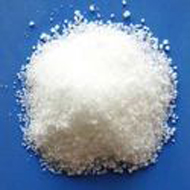 |
Application:- Sequestrant, emulsifier and buffer in foods. As mordant in dying, for weighing silk, in tanning, in manufactureing of enamels, ceramics, detergents, boiler compounds, as fire proofing agent, in soldering and brazing instead of borax, as reagent and buffer in analytical chemistry |
| |
 |
| |
|
|
|
| |
| |
|
| DI Sodium Edta |
|
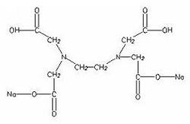 |
Di Sodium EDTA offered by us is basically known as Di ammonium Tetra Acidic Di Sodium Salt. These offer white crystalline form appearance and are extremely soluble in water. We offer these Odorless products which are widely used in various chemical industries. Our customers can avail these products at most reasonable rate. |
| |
 |
| |
|
|
|
| |
| |
|
| Di Sodium Phosphate Anhydrous / Dihyd. |
 |
Our clients can avail from us a cost effective range of Di Sodium Phosphate Anhydrous / Dihyd. that is acclaimed for low moisture content, and proper pH value. These are primarily used in boilers to prevent building up of scale and to remove accumulated scale. Processed under hygienic conditions, our range is accurate in composition and pure. Further, these are available in different grades to cater different requirements of clients. |
| |
 |
| |
|
|
|
| |
| |
|
| Dicalcium Phosphate (ANHY./ DHY.) |
 |
Dicalcium phosphate, also known as calcium monohydrogen phosphate, is a dibasic calcium phosphate. It is usually found as the dihydrate, with the chemical formula of CaHPO4 • 2H2O, but it can be thermally converted to the anhydrous form. It is practically insoluble in water, with a solubility of 0.02 g per 100 mL at 25 °C. It contains about 29.5 percent calcium in its anyhydrous form. |
| |
 |
| |
|
|
|
| |
| |
|
| Dried Ferrous Sulphate |
 |
With our knowledge and expertise in the respective domain, we are involved in offering our clients a comprehensive range Dried Ferrous Sulphate. Off white in color, these are effective to be used in animal feeds stimulating the growth of animal's body. Moreover, these drugs are also used for finishing the steel which is done after plating or coating. This is done when the steel sheet and rod is passed through sulphuric acid. |
| |
 |
| |
|
|
|
| |
| |
|
| EDTA ACID(Ethylenediaminetetraacetic Acid) |
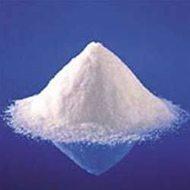 |
Ethylenediaminetetraacetic acid, widely abbreviated as EDTA (for other names, see Table) is a polyamino carboxylic acid and a colourless, water-soluble solid. Its conjugate base is named ethylenediaminetetraacetate. It is widely used to dissolve limescale.
Its usefulness arises because of its role as a hexadentate ("six-toothed") ligand and chelating agent, i.e. its ability to "sequester" metal ions such as Ca2+ and Fe3+. After being bound by EDTA, metal ions remain in solution but exhibit diminished reactivity. EDTA is produced as several salts, notably disodium EDTA and calcium disodium EDTA.
|
| |
 |
| |
|
|
|
| |
| |
|
| EDTA Tetra Sodium |
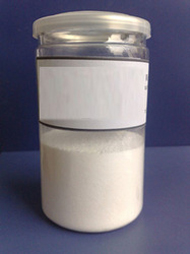 |
Tetra Sodium EDTA Salt Stability: Stable under ordinary conditions of use and storage. Hazardous Decomposition Products: Burning may produce carbon monoxide, carbon dioxide, nitrogen oxides. Hazardous Polymerization: Will not occur.
|
| |
 |
| |
|
|
|
| |
| |
|
| Ferric Ammonium Citrate |
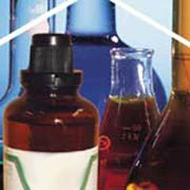 |
Ammonium ferric citrate is a food additive with E number E381 used as an acidity regulator.[citation needed] It is a green or reddish-brown powder which is very soluble in water.
Other uses for ammonium ferric citrate include water purification and printing (cyanotype). It is used as a reducing agent of metal salts of low activity like gold and silver and is also in a commonly used recipe with potassium ferricyanide to make cyanotype prints. Ammonium ferric citrate is also used in Kligler iron deeps to determine hydrogen sulfide production in microbial metabolism.
Ammonium ferric citrate is present in Scottish carbonated soft drink Irn-Bru. In medicine, ammonium ferric citrate is used as a contrast medium. It is also used as a hematinic[2] . |
| |
 |
| |
|
|
|
| |
| |
|
| Ferrous Fumerate |
|

|
We are counted amongst some of the reputed business organizations, engaged in processing Ferrous Fumerate 150mg. The range is packaged using non-reactant material so that the quality does not get adversely affected during storage. In order to meet the specific requirements of the clients, the medication is offered in various packaging options.
|
| |
 |
| |
|
|
|
| |
| |
|
| Ferrous Gluconate |
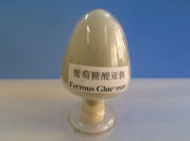 |
Ferrous Gluconate is a black compound often used as an iron supplement. It is the iron(II) salt of gluconic acid. It is marketed under brand names such as Fergon, Ferralet, and Simron.[2] It is also present in the combination supplement dianazene, a vitamin mixture created by L. Ron Hubbard and used in the religion Scientology |
| |
 |
| |
|
|
|
| |
|
| |
| |
|
| Ferrous Sulphate Crystal |
 |
We are instrumental in offering Ferrous Sulphate in crystal forms, which is formulated under hygienic conditions. Ferrous Sulphate or FeSO4 is found as the blue-green heptahydrate and widely used as a precursor to various iron compounds. Further, this crystals also work reducing agents and extensively used to reduce chromate in cement. We make use of active ingredients to formulate this crystals.
|
| |
 |
| |
|
|
|
| |
| |
|
| Glycerol Mono Stearate |
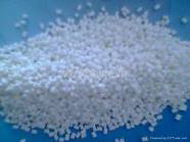 |
Glycerol Mono Stearate is made form the esterification of glycerol and fatty acids. It is one of the most widely used emulsifiers in the food and cosmetic industries. It is a lipophilic non-ionic surfactant available as an ivory white waxy solid in the form of power or flakes. It is available in 40-60% monoester content. It is extensively used in baked goods, confectionery, dairy, fats and starch products. |
| |
 |
| |
|
|
|
| |
| |
|
| Glycine |
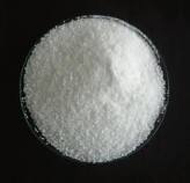 |
Glycine is an organic compound with the formula NH2CH2COOH. With only two hydrogen atoms as its 'side chain', glycine is the smallest of the 20 amino acids commonly found in proteins. Its codons are GGU, GGC, GGA, GGG.
Glycine is a colourless, sweet-tasting crystalline solid. It is unique among the proteinogenic amino acids in that it is not chiral. It can fit into hydrophilic or hydrophobic environments, due to its two hydrogen atom side chain |
| |
 |
| |
|
|
|
| |
| |
|
| Guar Powder |
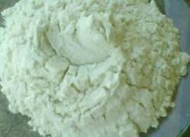 |
We are engaged in exporting of Guar Powder which is available in various grades of pure or derivative. Guar is a white to creamy colored, free flowing powder and is free from superfluous matter. It has ability to suspend solids, bind water by hydrogen bonding, control the viscosity of aqueous solutions, and form strong tough films. |
| |
 |
| |
|
|
|
| |
| |
|
| Gum Acacia |
|

|
Available with us a premium variety of Acacia Powder or Gum Acacia, which is an organic and soluble dietary fiber. We process this product traditionally, by hands and ensure that it retains its natural attributes. This herbal product widely used in the cosmetic industry for providing face lifting cosmetics. Rich in nutrients and organic ingredients, this gum is also edible. |
| |
 |
| |
|
|
|
| |
|
| |
| |
|
| Lactic Acid |
|
 |
Lactem is a Lactic acid ester of mono-diglycerides made form edible fully hydrogenated palm oil. It is an oily to waxy material, light yellow to amber in colour. The product is typically dispersible in hot water, indispersibele in cold water and solubel in edible oils and fats. |
| |
 |
| |
|
|
|
| |
| |
|
| Liquid Glucose |
|
 |
Liquid glucose molecular formula C6 H12 O6 also known as corn syrup is a fundamental ingredient in many food and industrial products it is a purified concentrated aqueous solution of nutritive saccharides obtained from starch. |
| |
 |
| |
|
|
|
| |
| |
|
| Liquid Paraffin Light |

|
Generally, white oil or mineral oil as it is known, is a popular blending base for pharmaceutical products and cosmetics. Since it is inert in nature, it readily lubricates, smoothens, softens, extends and resists moisture in numerous forms.
White oil is used as a base and as an adjuvant. They optimize consistency and are skin-friendly, which increases their utility in cosmetics.
|
| |
 |
| |
|
|
|
| |
| |
|
| M.C.C.P. (101/102) |
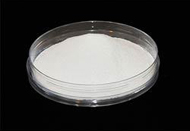 |
MCCP (Micro crystalline cellulose powder) is a white odorless, edible & metabolically inert powder which is used in Pharma Industries, Food Industries, Cosmetic Industries etc. Our product is pure and match international quality. We offer this product in bulk and small quantities to the above Industries regularly.
|
| |
 |
| |
|
|
|
| |
| |
|
| Magnesium carbonate Heavy / Light |

|
Magnesium carbonate, MgCO3, is a white solid that occurs in nature as a mineral. Several hydrated and basic forms of magnesium carbonate also exist as minerals. In addition, MgCO3 has a variety of uses.
(Used in Pharma Industries, Pan Masala’s, Rubbers, Inks, Textiles, Paper/Pulp, Detergents, Paints, Glass, Plastics, Electric Cables / Wires, Waste Water Treatment, Feed Supplement etc.) |
| |
 |
| |
|
|
|
| |
| |
|
| Magnesium Chloride |
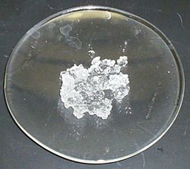 |
| NAME |
MAGNESIUM CHLORIDE |
| FORMULA |
MgCl2 |
| Molecular Wt. |
203.30 |
| CAS No. |
7791-18-6 |
Magnesium chloride is the name for the chemical compounds with the formulas MgCl2 and its various hydrates MgCl2(H2O)x. These salts are typical ionic halides, being highly soluble in water. The hydrated magnesium chloride can be extracted from brine or sea water. Magnesium chloride as the natural mineral bischofite is also extracted (solution mining) out of ancient seabeds; for example, the Zechstein seabed in northwest Europe. Anhydrous magnesium chloride is the principal precursor to magnesium metal, which is produced on a large scale. Hydrated magnesium chloride is the form usually used in prescription oral magnesium supplements
Applications
The Magnesium Chloride Hexahydrate is used in following industries: pharmaceutical industry, pharmaceuticals, dialysis and infusion solutions, children and infantile diets, food complements, drinks, salts for sea aquariums.
Magnesium Chloride is used in the manufacture of Magnesium Hydroxide Mg(OH) 2 for further preparation of Antacids for relieving stomach problems and ulcers. It is also used for alimentation.
It is used in industrial floorings, ship decks, railway passenger coach floorings, hospital floors and for aircraft hangar floors, ammunition factory floors, missile silos and underground armament factories and bunkers.
It is used directly as Magnesium Chloride Hexahydrate extensively for sizing of cotton yarn, especially denim.
It is used as a fire proofing agent for impregnation of wood, especially in mine timbers and specialized particle board.
It is an additive in fertiliser industry.
It is used in preparation of bath salts since it contains therapeutic minerals.
Magnesium Chloride is also used to coat insides of ore cars to prevent freezing of moist-ore in cold countries.
Also extensively used in processing Soya Bean as a food additive.
Another major use is in the preparation of Oxychloride Cement (3MgO MgCl2 11H2 O) which are made up in carefully balanced proportions of Magnesium Chloride and a dry mix consisting of calcined Magnesium Oxide (MgO) or Magnesite with fillers and other aggregates depending upon the requirement. These cements are fast setting and form a dense stone like product of smooth texture which is extremely strong, impact resistant, fire retardant and non sparking (antistatic).
| Packing |
25/ 50 Kgs Nett HDPE BAG |
|
| |
 |
| |
|
|
|
| |
| |
|
| Magnesium Oxide (Light and Heavy) |
 |
Pharma product available in light & heavy grades. Used as antacid, nutitional products along with vitamins & minerals. also used in rubber, ceramics, glass industries and binding agaent |
| |
 |
| |
|
|
|
| |
| |
|
| Magnesium Sulphate - Crystals |
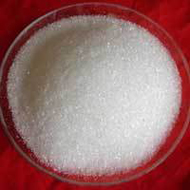 |
Magnesium sulphate is a colorless, transparent substance, widely used in fertilizer. Prepared using quality ingredient, crystalline magnesium sulphate increases the ability of plants to resist diseases thus improves the growth of plants. |
| |
 |
| |
|
|
|
| |
| |
|
| Maltodextrin |
|
 |
Maltodextrin is a polysaccharide that is used as a food additive. It is produced from starch by partial hydrolysis and is usually found as a creamy-white hygroscopic spraydried powder. Maltodextrin is easily digestible, being absorbed as rapidly as glucose, and might be either moderately sweet or almost flavorless. It is commonly used for the production of natural sodas and candy. It can also be found as an ingredient in some dry soup mixes. |
| |
 |
| |
|
|
|
| |
| |
|
| Manganese Chloride |
 |
Magnesium chloride is the name for the chemical compounds with the formulas MgCl2 and its various hydrates MgCl2(H2O)x. These salts are typical ionic halides, being highly soluble in water. The hydrated magnesium chloride can be extracted from brine or sea water.
Magnesium chloride as the natural mineral bischofite is also extracted (solution mining) out of ancient seabeds, for example the Zechstein seabed in northwest Europe. Anhydrous magnesium chloride is the principal precursor to magnesium metal, which is produced on a large scale. Hydrated magnesium chloride is the form usually used in prescription oral magnesium supplements. |
| |
 |
| |
|
|
|
| |
| |
|
| Manganese Sulfate |
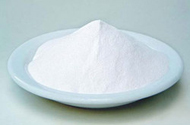 |
Manganese sulfate, the manganese salt of sulfuric acid, is an inorganic compound with the formula MnSO4. This pale pink deliquescent solid is a commercially significant manganese(II) salt. Approximately 260M kg/y were produced worldwide in 2005.[1] It is the precursor to manganese metal and many other chemical compounds. Mn-deficient soil is remediated with this salt.
Like many metal sulfates, manganese sulfate forms a variety of hydrates: monohydrate, tetrahydrate, pentahydrate and heptahydrate. The monohydrate is most common. All of these salts are faintly pink. The pale color of Mn(II) salts is characteristic of high-spin complexes with the d5 configuration. |
| |
 |
| |
|
|
|
| |
| |
|
| Mannitol |
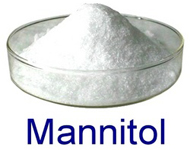 |
Mannitol is a white, crystalline[1] organic compound with the formula (C6H8(OH)6). This polyol is used as an osmotic diuretic agent and a weak renal vasodilator. It was originally isolated from the secretions of the flowering ash, called manna after their resemblance to the Biblical food, and is also referred to as mannite and manna sugar.[2] In plants, it is used to induce osmotic stress. |
| |
 |
| |
|
|
|
| |
| |
|
| Menthol Crystal |
|
 |
Natural Menthol Crystal, offered by us, is covalent organic compound that is procured from mint oils, mostly peppermint. We are counted among the renowned Menthol Crystal Manufacturers in national and international market. We can offer Menthol Crystal in small and large quantities as per the requirements of the clients. |
| |
 |
| |
|
|
|
| |
| |
|
| Methyl Paraben |
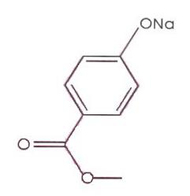 |
| NAME |
METHYL PARABEN |
| FORMULA |
C8H8O3 |
| Molecular Wt. |
152.15 |
| CAS No. |
99-76-3 |
Methylparaben is an anti-irritant agent and water-soluble anti-microbial. It is an anti-fungal and very commonly used as a preservative for cosmetics, drugs and food items. It functions as a preservative as well as a bacteriostatic agent. Methylparaben is extracted from the benzoic acid that is derived from benzoin tree gum. It is considered both to be a phenol as well as an ester. A lot of times, methylparaben is used in skincare and beauty projects for rejuvenation purposes.
Applications
Methylparaben is often used as an anti-fungal agent in foods. It operates to protect food items from Drosophila, which are often referred to as fruit flies or vinegar flies. Methylparaben functions to slow down the growth of fruit flies during both the larval and pupal periods.
Methylparaben is considered to be a safe substance. It is easily absorbed through both the skin as well as through the gastrointestinal tract. It quickly is excreted and eliminated without any building up inside of the body. It is non-toxic by parenteral and oral consumption. It works well with sensitive skin types and is gentle and non-irritating .
Methylparaben is an anti-fungal agent often used in a variety of cosmetics and personal care products. It is also used as a food preservative
| Packing |
10 Kgs Nett BOX/ BAG |
|
| |
 |
| |
|
|
|
| |
| |
|
| Methyl Salicylate |
 |
| NAME |
METHYL SALICYLATE |
| FORMULA |
C8H8O3 |
| Molecular Wt. |
152.15 |
| CAS No. |
119-36-8 |
Methyl Salicylate, otherwise known as oil of wintergreen, comes from several different species of plants. Plants which contain methyl salicylate produce an organic ester, which can be toxic to herbivores. Methyl salicylate can also be used by plants as a pheromone, as a warning to other plants of viral pathogens. Commercially, methyl salicylate can be synthesized by "esterifying" salicilic acid with methanol
Application
Methyl Salicylate and its oil have been used in topical analgesic and rubefacient preparations for the treatment of muscular and rheumatic pain.
Methyl salicylate is one of several antiseptic ingredients in Listerine mouthwash produced by the Johnson & Johnson company. It is also used in the "Dencorub Extra Strength" heat cream, which is used to treat joint and muscular pain and is a product of the Dencorub company.
It is also used to provide fragrance to various products and as an odor-masking agent for some organophosphate pesticides
Methyl salicylate can also be used in fine art printing applications to transfer a color photocopy image or color laser print to a high-rag content art paper, such as a hot-press watercolor paper.
Methyl salicylate, though its source plants are not true mints, is used as a mint in some kinds of chewing gum and candy, as an alternative to the more common peppermint and spearmint oils. It can also be found as a flavoring ofroot beer. It is also a potentially entertaining source of triboluminescence; when mixed with sugar and dried, it gains the tendency to build up electrical charge when crushed or rubbed. This effect can be observed by crushing wintergreen Life Savers candy in a dark room
|
| |
 |
| |
|
|
|
| |
| |
|
| Mono Calcium Phosphate |
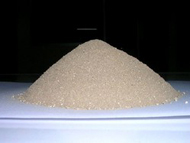 |
Monocalcium phosphate is a chemical compound with the formula Ca(H2PO4)2. It is commonly found as the monohydrate, Ca(H2PO4)2·H2O.
|
| |
 |
| |
|
|
|
| |
| |
|
| Mono Potassium Phosphate |
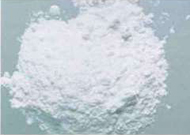 |
Monopotassium phosphate (also potassium dihydrogen phosphate, KDP, or monobasic potassium phosphate, MKP) -- KH2PO4 -- is a soluble salt which is used as a fertilizer, a food additive and a fungicide. It is a source of phosphorus and potassium.
It is also a buffering agent. When used in fertilizer mixtures with urea and ammonium phosphates, it minimizes escape of ammonia by keeping the pH at a relatively low level. |
| |
 |
| |
|
|
|
| |
| |
|
| Mono Sodium Phosphate (ANHYD/DIHYD) |
 |
We offer Mono Sodium Phosphate that is a chemical compound used for chemical polishing and electroplating. It prevents scaling in the boilers and also helps in the removal of accumulated scales. Formulated using quality ingredients, these chemicals are pure and safe and remains stable under different climatic conditions. We are able to provide customization to our clients in terms of packaging. |
| |
 |
| |
|
|
|
| |
| |
|
| Monothio Glycerol |
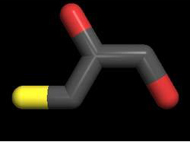 |
General Chemical Specifications:
| Assay (C3H8O2S; Anhydrous Basis) |
97.0-101.0% |
| Specific Gravity @ 25°C |
1.241-1.250 |
| Refractive Index @ 25°C |
1.521-1.526 |
| pH of a 1 in 10 Solution |
3.5-7.0 |
| MAXIMUM LIMITS |
| Water |
5.0% |
| Residue on Ignition |
0.1% |
| Selenium |
0.003% |
| Heavy Metals |
0.002% |
| Organic Volatile Impurities |
To pass test |
|
| |
 |
| |
|
|
|
| |
| |
|
| Para Chloro Meta Cresol(PCMC) |
-2011_10_21_33.jpg) |
We offer the Para Chloro Meta Cresol also known as PCMC which is used as preservative for drugs, paints, leather and adhesive chemicals.
Features: CAS No.: 59-50-7 Color: White Crystalline Powder Melting Point: 65-67°C Assay by G.C.: 98% min |
| |
 |
| |
|
|
|
| |
| |
|
| Para chloro meta xylenol ( PCMX ) |
-2011_10_21_46.jpg) |
We offer Para chloro meta xylenol, commonly known as PCMX and used to manufacture the antiseptics and germicides, Also used in Dettol.
Features CAS No.: 88-04-0 Color: White Crystalline Powder Melting Point: 114-116°C Assay by G.C.: 98% min.
|
| |
 |
| |
|
|
|
| |
| |
|
| Polyethylene Glycol (PEG) |
 |
PEG 400
| NAME |
POLYETHYLENE GLYCOL 400 |
| FORMULA |
C2nH4n+2On+1, n = 8.2 to 9. |
| Molecular Wt. |
380 - 420 |
| CAS No. |
25322-68-3 |
PEG 400 (polyethylene glycol 400) is a low molecular weight grade of polyethylene glycol. It is a clear, colorless, viscous liquid. Due in part to its low toxicity, PEG 400 is widely used in a variety of pharmaceutical formulations
Applications
- Chemical Intermediate
- Plasticizer
- In cosmetics for preparation of ointments and lotions.
- As a mold release agent and lubricant for both natural and synthetic products.
- As a dispersant and emulsifier for agricultural herbicides and pesticides.
- For lubricity in paper coating mixes; also as anti-sticking agents and oil resistors.
- In metal working industries as an additive in abrasives, for electro polishing and electroplating processes and in drawing and extrusion compounds.
- As a dye solubilizer in the continuous dyeing of nylon fabrics.
- As a humectant in topical spin finishes
- As an antidust compound for coal dust and fertilizer
PEG 4000
| NAME |
POLYETHYLENE GLYCOL 4000 |
| FORMULA |
HO(C2H4O)nH |
| Molecular Wt. |
3500-4500 |
| CAS No. |
25322-68-3 |
PEG - 4000 is a high molecular weight polymer of ethylene oxide and is a blend of polymers with different degrees of polymerisation . Like all other PEGs , PEG-4000 is readily soluble in water . So water can be the most economical solvent for this , apart from other organic solvents .PEG-4000 acts as binder & dry lubricant due to its laminar structure and therefore can be used in the manufacture of pills and tablets for certain pharmacutical preparations . In rubber industry , PEG-4000 can be used as a mould release agent . A solution of PEG-4000 of 3-20 % concentration can be coated or sprayed into the hot mould cavities , thus enabling the solvent to evaporate,the solution is either dried by applying heat or allowed to dry evaporation of solvent.
Other applications of PEG-4000 include as wetting agents to inhibit soap cracking , as binder for facial makeup , as antidusting agent for afterbath talcum powder , lubricant in paper industry , as a tyre mounting agent , as an additive in grease , as plasticiser in synthetic resin , as enhancer of thermal stability in adhesive preparations , as an additional component of galvanisation bath etc. for copper & nickel electroplating of steel and iron parts. PEGs being non ionic products , facilitate the even distribution of electrolytes.
PEG-4000 dissolved in lower glycols in place of paraffin wax are used for enbalming of histological and other medical specimens
PEG 6000
| NAME |
POLYETHYLENE GLYCOL 4000 |
| FORMULA |
HO(C2H4O)nH |
| Molecular Wt. |
3500-4500 |
| CAS No. |
25322-68-3 |
|
| |
 |
| |
|
|
|
| |
| |
|
| Potassium Antimony Tartrate |
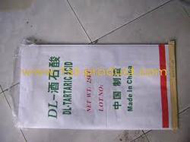
|
Antimony Potassium tartrate is a double salt first prepared by an apothecary, Pierre Seignette, of La Rochelle, France. As a result the salt was known as Seignette's salt or Rochelle salt. Rochelle salt is not to be confused with rock salt, which is simply the mineral form of sodium chloride.
|
| |
 |
| |
|
|
|
| |
| |
|
| Potassium Bicarbonate |
 |
Potassium bicarbonate (also known as potassium hydrogen carbonate or potassium acid carbonate), is a colorless, odorless, slightly basic, salty substance. According to the US Food and Drug Administration (FDA), potassium bicarbonate is "generally recognized as safe".[2]
Potassium bicarbonate is soluble in water, and is often found added to bottled water to affect taste; however, it is not soluble in alcohol. Decomposition of the substance occurs between 100 °C and 120 °C into K2CO3 (potassium carbonate), H2O (water), and CO2 (carbon dioxide)
In concentrations greater than 0.5%, KHCO3 can have toxic effects on plants[citation needed] (potassium bicarbonate has widespread use in crops, especially for neutralizing acidic soil, and is also under consideration as an organic fungicide[3]), although there is no evidence of human carcinogenicity, no adverse effects of overexposure, and an undetermined LD50. |
| |
 |
| |
|
|
|
| |
| |
|
| Potassium Chloride |
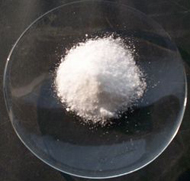
|
The chemical compound potassium chloride (KCl) is a metal halide salt composed of potassium and chlorine. In its pure state, it is odorless and has a white or colorless vitreous crystal appearance, with a crystal structure that cleaves easily in three directions. Potassium chloride crystals are face-centered cubic. Potassium chloride is occasionally known as "muriate of potash," particularly when used as a fertilizer.
Potash varies in color from pink or red to white depending on the mining and recovery process used. White potash, sometimes referred to as soluble potash, is usually higher in analysis and is used primarily for making liquid starter fertilizers.
KCl is used in medicine, scientific applications, food processing and in judicial execution through lethal injection. It occurs naturally as the mineral sylvite and in combination with sodium chloride as sylvinite. |
| |
 |
| |
|
|
|
| |
| |
|
| Potassium Citrate |
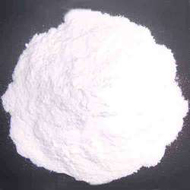 |
Potassium citrate is a potassium salt of citric acid with the molecular formula C6H5K3O7. It is a white, slightly hygroscopic crystalline powder. It is odorless with a saline taste. As a food additive, potassium citrate is used to regulate acidity. Medicinally, it may be used to control kidney stones derived from either uric acid or cystine.
|
| |
 |
| |
|
|
|
| |
| |
|
| Potassium Hydroxide Flakes |
 |
We offer caustic potash flakes in specific grades and specifications to satisfy our clients requirements. Caustic potash flakes supplied by us have found a variety of applications in different industrial sectors. Best quality Potassium Hydroxide are being provided by us to our clients. |
| |
 |
| |
|
|
|
| |
| |
|
| Potassium Iodate |
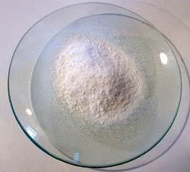 |
Potassium iodate is an oxidizing agent and as such it can cause fires if in contact with combustible materials or reducing agents. It can be prepared by reacting a potassium-containing base such as potassium hydroxide with iodic acid.
Potassium iodate (KIO3) is a chemical compound. It is sometimes used in radiation treatment, as it can replace radioactive iodine from the thyroid. See potassium iodide for more information on this use. |
| |
 |
| |
|
|
|
| |
| |
|
| Potassium Meta Bi Sulphite |
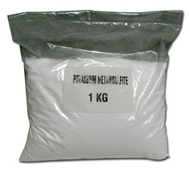 |
Our organization is engaged in offering qualitative range of potassium meta bi sulphite as per the specific requirements of our valued clients. These are formulated in compliance with the industrial standard so as to provide optimum quality in the final product. |
| |
 |
| |
|
|
|
| |
| |
|
| Propyl Paraben Sodium |

|
| NAME |
PROYLPARABEN SODIUM |
| FORMULA |
C10H11NaO3 |
| Molecular Wt. |
202.18 |
| CAS No. |
35285-69-9 |
Sodium propylparaben, the sodium salt of propylparaben, a compound with formula Na(C3H7(C6H4COO)O),Propylparaben Sodium is also known as Sodium propyl p-hydroxybenzoate. Propylparaben Soidum is also used similarly as a food additive and as an anti-fungal preservation agent. Its E number is E217.
Applications
Propylparaben Sodium Used in cosmetics, food, medicine, feed and other aspects of a very effective preservative
Propylparaben Sodium can be in the low concentration of bacteria and other microorganisms quite effective against the role of such products is white, odorless, tasteless, non-irritating, with a high degree of security crystalline powder, whether in acid, alkali. It has very good antibacterial activity, it cannot be used for preservative effect of acid or salts where, due to Nipagin lipids with a variety of functions, can be used in all cases superior to nature, but also Suitable for general food safety, the use of chemical preservatives. Nipagin lipids especially for cosmetics manufacturing, are widely used in creams, lotions, shampoo, mouthwash, toothpaste and other cosmetics.
| Packing |
5 Kgs Nett carton |
|
| |
 |
| |
|
|
|
| |
| |
|
| Propylparaben |
 |
Propylparaben
| NAME |
PROYL PARABEN |
| FORMULA |
C10H12O3 |
| Molecular Wt. |
180.20 |
| CAS No. |
94-13-3 |
Propylparaben, the propyl ester of p-hydroxybenzoic acid, occurs as a natural substance found in many plants and some insects, although it is manufactured synthetically for use in cosmetics, pharmaceuticals and foods. It is a preservative typically found in many water-based cosmetics, such as creams, lotions, shampoos and bath products. As a food additive, it has the E numberE216.
Applications
Cosmetics, pharmaceuticals, and foods can all spoil if they do not contain a preservative. Consequently, propylparaben has become the preservative of choice, especially for cosmetics that are water-based — like moisturizers, shampoos, shower cleansers, conditioners, and sunscreens. It is even used in lipsticks, foundations, mascaras, and eye shadows — sometimes at levels approaching 25%.
In the pharmaceutical industry, propylparaben is a common preservative for certain drugs. As a result, it is administered to humans in several ways: injections, orally, or through suppositories. However, it is almost always in concentrations of less than 1%.
| Packing |
4/16 Kgs Nett carton |
|
| |
 |
| |
|
|
|
| |
| |
|
| PVPK 30 |
 |
PVPK- 3- is being used in many Pharmaceutical industries. Our offered Polyvinylpyrrolidone (PVP) is a product which is cross-linkable to a water insoluble, swell-able material. This is insoluble or smell-able because of the course of vinylpyrrolidone polymerization, by addition of an appropriate multi-functional co-monomer, or by post-reaction; typically through hydrogen abstraction chemistry. |
| |
 |
| |
|
|
|
| |
| |
|
| Salicylic Acid |
|
 |
| NAME |
SALICYLIC ACID |
| FORMULA |
C6H4(OH)COOH |
| Molecular Wt. |
138.12 |
| CAS No. |
69-72-7 |
Salicylic acid is a beta hydroxy acid derived from the bark of a willow tree. It has both cosmetic and medicinal uses. It is often found in skin care products because of its ability to treat acne, psoriasis, warts and other skin conditions.
Salicylic acid word comes from Latin salix, willow tree, from the bark of which the substance used to be. This colorless crystalline organic acid is widely used in organic synthesis and functions as a plant hormone. It is probably best known for its use in anti-acne treatments. The salts and esters of salicylic acid are known as salicylates.
Applications
Salicylic acid has been used to treat fevers since ancient times. In modern times, it is also used to treat pain and prevent heart disease. The pain and fever reliever, aspirin, is actually derived from a compound of salicylic acid. It is helpful in preventing blood clots and heart attacks.
When applied to the skin, salicylic acid works by causing the cells of the epidermis to shed properly. This prevents skin pores from getting clogged up and subsequently being infected with bacteria. For this reason, it is also used in dandruff shampoos to speed up the process of shedding. It's basically a chemical agent that aids in the process of exfoliation by eliminating surface skin cells and opening up pores.
Although toxic in large quantities, salicylic acid is used as a food preservative and as bactericidal and an antiseptic.
| Packing |
35 Kgs Nett Carbouy |
|
| |
 |
| |
|
|
|
| |
| |
|
| Simethicone 30/ 100 |
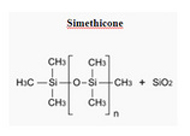 |
Simethicone is an oral anti-foaming agent used to reduce bloating, discomfort and pain caused by excess gas in the stomach or intestinal tract. It is a mixture of polydimethylsiloxane andsilica gel |
| |
 |
| |
|
|
|
| |
| |
|
| Sodium Acetate |

|
Sodium acetate, NaC2H3O2, also sodium ethanoate, is the sodium salt of acetic acid. This colourless salt has a wide range of uses.
|
| |
 |
| |
|
|
|
| |
| |
|
| Sodium Acid Phosphate |
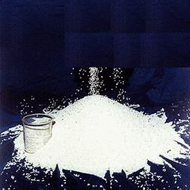 |
Properties White powder Soluble in water Specification Molecular Weight. : 222 Appearance : White Anhydrous PH of 5 % Solution : 3.8 - 4.8 Assay % Min. : 98/99 Phosphate asP205 % Min. : 62.0
|
| |
 |
| |
|
|
|
| |
| |
|
| Sodium Alginate |
 |
we are a prominent sodium alginate exporter, presenting calcium sodium alginate. A gigantic range of sodium alginate and calcium chloride can be easily purchased from single shop named as m/s pragati associates.
We have a team of result oriented professionals which has immense experience in the field of calcium sodium alginate, sodium alginate and calcium chloride etc. |
| |
 |
| |
|
|
|
| |
| |
|
| Sodium Benzoate |
|
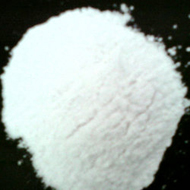
|
| NAME |
SODIUM BENZOATE |
| FORMULA |
C7H5NaO2 |
| Molecular Wt. |
144.2 |
| CAS No. |
532.32.1 |
Sodium benzoate has the chemical formula NaC6H5CO2; it is a widely used food preservative. It is the sodium salt of acid and exists in this form when dissolved in water. It can be produced by reacting sodium hydroxide with benzoic acid.
Application
Sodium Benzoate is mainly used for preserving Fruits, Jams, Jellies, Pickles, Meat, fisht etc. It is also used for preserving fruit juice & fruit beverages. The reason you will note sodium benzoate listed in the ingredients of so many foods is because it works very well at killing bacteria, yeast and fungi. Sodium benzoate is a preservative. It is bacteriostatic and fungi static under acidic conditions. It is most widely used in acidic foods such as salad dressings (vinegar), carbonated drinks (carbonic acid), jams and fruit juices (citric acid), pickles (vinegar), and condiments. Sodium Benzoate Powder or Flakes does not affect the nutrient value of goods & is entirely harmless to human begins. It is also used as a preservative in medicines and cosmetics. It is also used in fireworks as a fuel in whistle mix. Sodium Benzoate is widely used in paint industry, cattle feed, mosquito repellent etc.
Sodium benzoate is produced by the neutralization of benzoic acid with sodium hydroxide.[3] Benzoic acid is detectable at low levels in cranberries, prunes,greengage plums, cinnamon, ripe cloves, and apples. Though benzoic acid is a more effective preservative, sodium benzoate is more commonly used as a food additive because benzoic acid does not dissolve well in water.
All available published information indicates that the presence of Sodium Benzoate by itself has no effect on the vitamin content of food. However all foods whether preserved with Sodium Benzoate or by some other preservation are subject to chemical changes unless they are packed to exclude air.
| Container Loadability |
14 MTS / 20 ftr |
| Packing |
25 kgs HDPE Bags with Liner inside. |
|
| |
 |
| |
|
|
|
| |
| |
|
| Sodium Bi Carbonate |
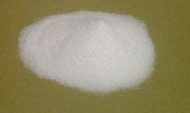 |
Sodium bicarbonate or sodium hydrogen carbonate is the chemical compound with the formula NaHCO3. Sodium bicarbonate is a white solid that is crystalline but often appears as a fine powder. It has a slightly salty, alkaline taste resembling that of washing soda (sodium carbonate). It is a component of the mineral natron and is found dissolved in many mineral springs.
The natural mineral form, nahcolite, is found in dissolved form in bile, where it serves to neutralize the acidity of the hydrochloric acid produced by the stomach, and is excreted into the duodenum of the small intestine via the bile duct. It is also produced artificially. |
| |
 |
| |
|
|
|
| |
| |
|
| Sodium Chloride |
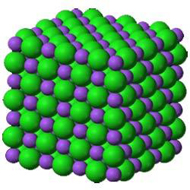
|
Sodium Chloride
| NAME |
SODIUM CHLORIDE |
| FORMULA |
NaCl |
| Molecular Wt. |
58.44 |
| CAS No. |
7647-14-5 |
Sodium chloride, also known as salt, common salt, table salt or halite, is an ionic compound with the formula NaCl. Sodium chloride is the salt most responsible for the salinity of the ocean and of the extracellular fluid of many multicellular organisms. As the major ingredient in edible salt, it is commonly used as a condiment and food preservative.
Applications
The following are the household and general sodium chloride uses.
Preservative : Since ancient times, salt has been used as a preservative. Although today various preservatives are available, salt is still widely used. It is an important preservative used in preservation of cheese, dairy products, meat, pickles and sauces.
Melting Ice : Sodium chloride has a property of lowering the melting point of ice. Therefore, it is spread on roads for quick melting of the ice.
Cleansing Agent : Sodium chloride has also been used as a cleansing agent since long time. In ancient times, it was used for household cleaning simply by rubbing it against surfaces. It is also an ingredient of soaps, detergents and shampoos.
Chlorine : Sodium chloride is widely used for the preparation of chlorine. Chlorine has several applications, but is mostly used in making PVC and pesticides.
Chemicals : Sodium chloride is also used for the production of sodium metal. It is widely used for the production of other compounds like calcium chloride, sodium carbonate, sodium sulfate and hydrochloric acid.
Sodium Chloride Medical Uses
Certain properties of sodium chloride makes it useful for medical purposes. Let us have a look at them
Sodium Chloride Tablets : The biggest medicinal use of sodium chloride is that it is used for making sodium chloride tablets. Sometimes there is excessive loss of sodium from our body due to dehydration or excess sweating. Sodium chloride tablets are prescribed as supplements for salts in this case.
Sodium Chloride IV : It is known that sodium chloride leads to rise in the blood pressure and hence it is used to treat people with low blood pressures. Low blood levels of this salt needs to treated to avoid further serious conditions.
Sodium Chloride Injections : : Sodium chloride is an element used in sodium chloride injections that are used as source of salts and electrolytes. Sodium chloride IV is more prominently used rather than sodium chloride injections.
Ophthalmic Ointment : In certain cases, a solution of sodium chloride is also used to treat the swelling of cornea in the eye. Although it is beneficial to some extent, there are also some side-effects associated with using sodium chloride for treating the swelling of cornea.
Other Sodium Chloride Uses
Apart from these common and medical uses, the following are some general uses of sodium chloride.
- Sodium chloride contains iodine which is necessary for the synthesis of hormones in the thyroid gland of the human body.
- Sea salt also helps in maintaining sugar level in blood. Read more on health benefits of sea salt
- Salt water is also uses for gargling or as a mouthwash
- Peeling eggs will be easier if eggs are boiled in water with a pinch of salt.
- Cold water with salt is used to wash feet and also to relieve the feeling of tiredness.
| Packing |
25/ 50 Kgs Nett HDPE BAG |
|
| |
 |
| |
|
|
|
| |
| |
|
| Sodium Citrate |
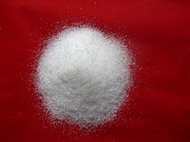 |
We offer sodium citrate solution which is a sodium salt of citric acid with the chemical formula of Na3C6H5O7. It is also known as sour salt due to having a mild saline flavor. Our range of sodium citrate solution is accurately composed of sodium citrate and is widely used in food and beverage industry as preservatives and flavoring agent and also in detergent and pharmaceutical industries.
|
| |
 |
| |
|
|
|
| |
| |
|
| Sodium Lauryl Sulfate |
 |
sodium lauryl sulfate (SLS) (C12H25SO4Na) is an anionic surfactant used in many cleaning and hygiene products. The salt consists of an anionic organosulfate consisting of a 12-carbon tail attached to a sulfate group, giving the material the amphiphilic properties required of a detergent.sodium lauryl sulfate (SLS) (C12H25SO4Na) is an anionic surfactant used in many cleaning and hygiene products. The salt consists of an anionic organosulfate consisting of a 12-carbon tail attached to a sulfate group, giving the material the amphiphilic properties required of a detergent. |
| |
 |
| |
|
|
|
| |
| |
|
| Sodium Meta Bi Sulphite |
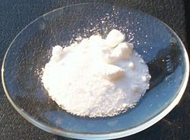 |
Sodium metabisulfite or sodium pyrosulfite (IUPAC spelling; Br. E. sodium metabisulphite or sodium pyrosulphite) is an inorganic compound of chemical formula Na2S2O5. The substance is sometimes referred to as disodium (metabisulfite, etc.). It is used as a disinfectant, antioxidant and preservative agent. |
| |
 |
| |
|
|
|
| |
| |
|
| Sodium Methyl Paraben |
 |
| NAME |
METHYL PARABEN SODIUM |
| FORMULA |
C8H7NaO3 |
| Molecular Wt. |
174.13 |
| CAS No. |
5026-62-0 |
Sodium methyl paraben is a compound with formula Na(CH3(C6H4COO)O). It is the sodium salt of methylparaben. It is also known as Sodium methyl para-hydroxybenzoate.
Commercially it is synthetically made from toluene, which is then esterified.
Applications
Sodium methylparaben widely used as preservatives that inhibit the growth of yeast, fungi, and bacteria.
Sodium methylparaben is not pH sensitive.
Sodium methylparaben is used in a large range of acidic products like alcoholic beverages (wines, spirits, pre-mixed spirits), soft drinks, cordials, sports drinks, salad dressings, condiments, fish (smoked, dried, fermented), fruit juice concentrates, ciders, vinegar, and sauces.
| Packing |
4/16 Kgs Nett cartoon |
|
| |
 |
| |
|
|
|
| |
| |
|
| Sodium Propyl Paraben |
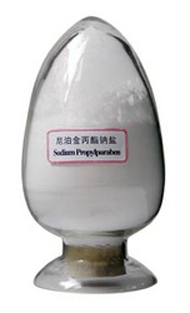
|
The chemical name for Propyl Paraben Sodium I.P. is Sodium Propyl 4-Hydroxybenzoate. The molecular formula is C10H11NaO3with the molecular weight of 202.18 and CAS Number 35285-69-9. The shelf life of the chemical is 3 years and is available in packing of 25 Kg and 20 Kg (4 x 5 kg). It is recommended to store the product in tightly closed containers. It is widely used as an Antimicrobial Preservative. |
| |
 |
| |
|
|
|
| |
| |
|
| Sodium Saccharin |
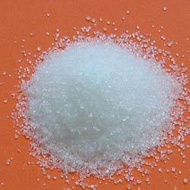 |
Saccharin[2] is an artificial sweetener. The basic substance, benzoic sulfilimine, has effectively no food energy and is much sweeter than sucrose, but has an unpleasant bitter or metallic aftertaste, especially at high concentrations. It is used to sweeten products such as drinks, candies, biscuits, medicines, and toothpaste. |
| |
 |
| |
|
|
|
| |
| |
|
| Sodium Salicylate |
|
 |
Sodium salicylate is a sodium salt of salicylic acid. It can be prepared from sodium phenolate and carbon dioxide under higher temperature and pressure. Historically, it has been synthesized from methyl salicylate (found in wintergreen plants or the bark of sweet birch tree) by reacting it with an excess of sodium hydroxide and heating it under reflux.[1] |
| |
 |
| |
|
|
|
| |
| |
|
| Sodium Starch Glycolate |
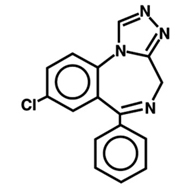 |
Available with us is a wide range of Sodium Starch Glycolate, which is the sodium salt of a carboxymethyl ether of starch. Appreciated for good storage properties and stability, our range is used in pharmaceutical industry as a disintegrant in table formulations and capsules.
It is also used in tablets that are prepared either by direct-compression or wet granulation process. Unlike other disintegrants, the disintegrant efficiency of our range is unimpaired in the presence of hydrophobic excipients. |
| |
 |
| |
|
|
|
| |
| |
|
| Talcum Powder |
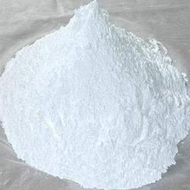
|
We provide premium quality Talcum Powder to our clients that find wide applications in varied industries such as master batch industries, paper industries and paint industries. This product is available at economical prices. Furthermore, we also ensure that this product is flawless and is at par with industry norms and standards.
|
| |
 |
| |
|
|
|
| |
|
| |
| |
|
| Terpin Hydrate |
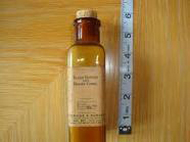
|
Terpin hydrate is an expectorant, commonly used to loosen mucus in the setting of acute or chronic bronchitis, and related conditions. It is derived from sources such as oil of turpentine, oregano, thyme and eucalyptus.
Though it was quite popular in the USA since the late nineteenth century, it was banned by the U.S. Food and Drug Administration (FDA) in the 1990s due to alleged lack of proof of efficacy. Common speculation is that the pharmaceutical industry wanted it removed to boost sales of weaker, less effective products. |
| |
 |
| |
|
|
|
| |
| |
|
| Terpineol |
 |
Terpineol is a naturally occurring monoterpene alcohol that has been isolated from a variety of sources such as cajuput oil, pine oil, and petitgrain oil[1].
There are three isomers, alpha-, beta-, and gamma-terpineol, the last two differing only by the location of the double bond. Terpineol is usually a mixture of these isomers with alpha-terpineol as the major constituent.
|
| |
 |
| |
|
|
|
| |
| |
|
| Tri Calcium Phosphate |
 |
Tricalcium phosphate is a calcium salt of phosphoric acid with the chemical formula Ca3(PO4)2. It is also known as tribasic calcium phosphate or "bone ash" (calcium phosphate being one of the main combustion products of bone). |
| |
 |
| |
|
|
|
| |
| |
|
| Tri Choline Citrate 65 |
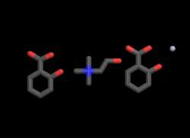 |
Owing to our expertise in the respective domain, we are engaged in providing our customers a wide range of Tri Choline Citrate. Our medical experts ensure that these chemicals are formulated in strict tandem with the set guidelines of the respective industry, so that these are highly effective and safe. These are offered at most affordable prices. |
| |
 |
| |
|
|
|
| |
| |
|
| Tri Ethanolamine |
|
 |
We are regular suppliers of full range of all grades/ range of Tri-ethanolamine, D.E.G., M.E.G., E.L.-40, C.O.-40 & other solvent chemicals in small as well as bulk packing.
We also deal in Caustic Soda, Soda Ash and other similar auxiliaries in powder/ flakes/ liquid forms. The same products are one of the major raw-material for making auxiliaries for Textile Industry. |
| |
 |
| |
|
|
|
| |
| |
|
| Tri Sodium Citrate |
 |
Tri sodium citrate is one more important chemical used in industries, colleges and in medicinal laboratories. These chemicals are very bitter in their taste and are available in white crystalline powder in the market. The chemical formula of tri sodium citrate is Na3C6H5O7. This very kind of chemical is also known as sodium citrate. |
| |
 |
| |
|
|
|
| |
| |
|
| Triclosan |
 |
Triclosan is an antibacterial and antifungal agent. It is a polychloro phenoxy phenol. Despite being used in many consumer products, beyond its use in toothpaste to prevent gingivitis, there is no evidence according to the American Food and Drug Administration (FDA) that triclosan provides an extra benefit to health in other consumer products.[1] Triclosan safety is currently under review by the FDA.[1] |
| |
 |
| |
|
|
|
| |
| |
|
| Zinc Chloride |
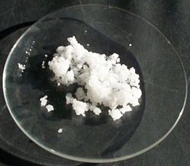 |
Zinc chloride is the name of chemical compound with the formula ZnCl2 and its hydrates. Zinc chlorides, of which nine crystalline forms are known, are colorless or white and highly soluble in water. ZnCl2 itself is hygroscopic and even deliquescent. Samples should therefore be protected from sources of moisture, including the water vapor present in ambient air.
Zinc chloride finds wide application in textile processing, metallurgical fluxes, and chemical synthesis. No mineral with this chemical composition is known aside from a very rare mineral, simonkolleite, Zn5(OH)8Cl2·H2O. |
| |
 |
| |
|
|
|
| |
| |
|
| Zinc Oxide |
|
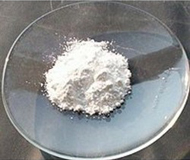 |
Zinc oxide is an inorganic compound with the formula ZnO. It usually appears as a white powder, nearly insoluble in water. The powder is widely used as an additive into numerous materials and products including plastics, ceramics, glass, cement, rubber (e.g., car tires), lubricants,[2] paints, ointments, adhesives, sealants, pigments, foods (source of Zn nutrient), batteries, ferrites, fire retardants, first aid tapes, etc. ZnO is present in the Earth's crust as the mineral zincite; however, most ZnO used commercially is produced synthetically. |
| |
 |
| |
|
|
|
| |
| |
|
| Zinc Stearate |
 |
Zinc stearate (Zn(C18H35O2)2) is a zinc soap that repels water. It is insoluble in polar solvents such as alcohol and ether but soluble in aromatic hydrocarbons (e.g., benzene and chlorinated hydrocarbons) when heated. It is the most powerful mold release agent among all metal soaps.
It contains no electrolyte and has a hydrophobic effect. Its main application areas are the plastics and rubber industry where it is used as a releasing agent and lubricant which can be easily incorporated.
|
| |
 |
| |
|
|
|
| |
| |
|
| Zinc Sulphate (HEPTA / MONO) |
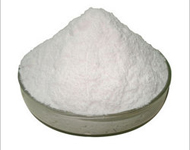 |
The wide array of industrial chemicals that we offer includes Zinc Sulphate. These are a colorless crystalline and water soluble chemical compound. The aqueous solution of dry zinc sulphate is used for removing moss. |
| |
 |
| |
|
|
|
| |
|
|